Birds
 |
| Double crowned crane |
Please understand earth first, then go to Moon.
 |
| Double crowned crane |
Ramesh Chandra Majumdar’s life is one of the glowing showcases of a full life lived productively, usefully, in the devoted pursuit of an ideal: knowledge and national service. It reminds us of D.V. Gundappa’s evocative line in his magnum opus, Mankutimmana Kagga: “ghana tattva ondakke dinaratri manasotu…” (surrender yourself day and night to a grand ideal…). He spent his ninety-six years-long life dedicating himself to the freedom struggle of a far profounder and intensely penetrating sort: rediscovering and recovering the true history of Bharatavarsha’s actual greatness. The outcome was a wealth of magnum opuses totalling nearly 30 volumes apart from scores of solid research papers and even popular newspaper articles.
If one has to describe the history of India after Independence in a word, it is ingratitude. Nowhere is this more evident than in the manner in which the career of this iconic historian, scholar and freedom fighter was set afire by India’s first Prime Minister Jawaharlal Nehru and his perfidious cronies.
This is the full story of that national tragedy.
… It is an ominous sign of the time that Indian history is being viewed in official circles in the perspective of recent politics. The official history of the freedom movement starts with the premise that India lost independence only in the eighteenth century and had thus an experience of subjection to a foreign power for only two centuries. Real history, on the other hand, teaches us that the major part of India lost independence about five centuries before, and merely changed masters in the eighteenth century.” [Emphasis added]
This is how R.C. Majumdar, one of the greatest and encyclopaedic historians of the world described the state of history writing in India in the immediate aftermath of attaining Independence. This quote appears in the preface to the First Volume of the three-volume, definitive History of the Freedom movement in India published in 1962.[i]
The last volume of the 11-Volume magnum opus The History and Culture of the Indian People under his general editorship chronicles India’s freedom struggle. However, his History of the Freedom movement in India (HFMI) treats this great episode in world history independently. It has given us a work of history that remains unsurpassed even today. It is a natural classic. That it is the work of just one man is an extraordinary tale of inspiration and a lesson of life in its own right.
The story of how the History of the Freedom movement in India came to be written deserves multiple retellings not in the least because it was deliberately, disgracefully suppressed and buried for more than sixty years — that is, till the communist stranglehold on public discourse and history was permanently shattered. Most importantly, the story needs to be told for the sake of our children of today, and their children of tomorrow.
That our Marxists-Communists-Secularists-Progressives-Left-Liberals have subverted our history among other things is largely well-known. However, if you thought that they were the pioneers of this historical and intellectual insurgency, think again.
The roots of the rot had begun to sink in deep and take shape elsewhere.
In 1948, R.C. Majumdar submitted a proposal to the Government to write an authentic and truthful history of the freedom struggle, a fact that he records in some detail in the Appendix of Volume 1 of HFMI.[ii] This first-ever proposal on this much-needed endeavour was accepted.
What happened next is best narrated by Dr. B.N. Pandey in his review of Volume 1 of Majumdar’s HFMI.[iii]
In 1952 the Ministry of Education appointed a Board of Editors for the compilation of the history. Professor Majumdar was appointed by the Board as the Director and entrusted with the work of sifting and collecting materials and preparing the draft of the history.
However, the Board as consisting of politicians and scholars, was least likely to function harmoniously. Perhaps this was the reason why it was dissolved at the end of 1955. [Emphasis added]
This actually gives away the fact that political interference began on Day One to the obvious detriment of scholarship, which must essentially rest on truth and honesty. Dr. Pandey’s moderate language merely throws a hint of what exactly had happened. His language is also a reflection of an era where restraint in language and public life was highly valued. Yet this is not the full story. The reason the Board was dissolved lies elsewhere. Dr. Pandey continues,
In [the first] volume the distinguished author has shown ample courage and sound scholarship in approaching some very controversial and delicate questions. On the question of Hindu-Muslim relationship in pre-British India he refutes the commonly held view that the Hindus and Muslims lived in harmony before the advent of the British and that the Hindu-Muslim tension was the outcome of the British policy to divide and rule. These two communities, the author holds, lived as “two separate communities with distinct cultures and different mental, and moral characteristics” (p. 33). He argues that the Hindu leaders, including Gandhi and Nehru, deliberately ignored the fundamental differences between the Hindus and Muslims and made no serious efforts “to tackle the real problem that faced India, namely how to make it possible for two such distinct units to live together as members of one State (p. xix). [Emphasis added] [iv]
However, it was merely the board that was dissolved. The project was very much alive. As Dr. Pandey notes, it remained “in balance for a year” after which the Government entrusted it to a Nehru-bootlicking bureaucrat named Tara Chand in the Education ministry who was India’s ambassador to Teheran from 1951–56. Tara Chand’s spurious tract was published in 1967 by the Publications Division, Ministry of Information and Broadcasting. This, tragically, remains the official (read: Congress dynasty’s) history of the freedom struggle (the title is the same as that of R.C. Majumdar’s volumes) till date.
But R.C. Majumdar was undeterred and unflinching in his quest to author the most authentic history of the freedom struggle of his own countrymen: to keep their pains, tears, sacrifices, struggles, spirit, and hopes alive and fresh, and to preserve the dignified forest of their heroic memories watered and evergreen. This proud son of Bengal did not approach this work merely as a project: it was akin to working towards the same goal with the same spirit that animated our freedom struggle. R.C. Majumdar had lived it as witness, participant, and chronicler. It was National Service in the truest sense of the word. In his own[v] words,
I have been a witness to the grim struggle from 1905 to 1947, and do not pretend to be merely a dispassionate or disinterested spectator; I would have been more or less than a human being if I were so…Without denying this possibility…I have tried my best to take a detached view. On the other hand, I possess certain advantages … in having a first-hand knowledge of the important events and … impressions and sentiments they left behind on the minds of the people. It is difficult to form a proper idea of these by one who, living at a later period, has only to rely on the record of the past in order to reconstruct its history.
How many historians and scholars in the present time possess this kind of honesty?
With meagre resources, Majumdar worked alone and completed the majestic three-volume work in just seven years. It is still the most comprehensive, authoritative and unchallenged work on India’s freedom struggle.
Three crucial observations emerge from this saga.
First, the seeds for the politicisation of the history establishment were sown when politicians were appointed to a scholarly/academic Board, a place they had no business to be.
Second, the precedent for slaughtering historical truths was set because Majumdar had declared that he would critically examine the roles played by Mohandas Gandhi, Motilal and Jawaharlal Nehru in the Independence struggle. This was a taboo and would certainly infuriate the first and more crucially, the socialist Prime Minister Nehru. In the words of Dr. N.S. Rajaram, “What was Majumdar’s crime? He refused to bend history to suit the interest of the Congress.” [vi] Thus, the stage was set for rampant historical distortions at the hands of Marxist pamphleteers for the next fifty-odd years at all levels: school to the university. The distortions remain even as we speak.
The third concerns the timeline. On the one hand is the “official” project whose trajectory is as follows: it begins at the dissolution of the Board in 1955, restarts in 1956–57 and is finally published by the Government in 1967. This project has the complete backing of the Government and resources on demand. On the other hand, we have the illustrious example of a dedicated scholar working alone, who publishes the grand three-volume HFMI five years before the “official” version. This point too, has an important bearing on what follows.
he Education Minister back when the project’s proposal was conceived and submitted by R.C. Majumdar was Jawaharlal Nehru’s Man Friday, the vile Maulana Azad. He was succeeded by three equally, dynasty-friendly Education Ministers. It was during the tenure of another awful dynasty lackey, Fakhruddin Ali Ahmed that Tara Chand’s sanitized bundle of historical lies was finally published. The same Fakhruddin Ali Ahmed who signed Indira Gandhi’s Emergency proclamation.

Thus came about the systematic marginalisation and banishment of a towering historian, scholar and patriot which went hand in hand with the construction of a Marxist Grand Narrative of Indian history that was elevated to vile levels and has come to be the mainstay of not just our history but our public discourse. It is precisely the teaching of this fraudulent “history” to at least three generations of our children that the disgusting spectacle of say, the maniac Mamata Banerjee arresting people for chanting “Jai Shri Ram” has occurred. Or why for example, we don’t bat an eyelid at the routine public abuse and vandalism of Hindu deities, traditions, and institutions.
This is the reason that the story of heroes like R.C. Majumdar and the realities of his time must be told, at least now, to build a nation based on accepting and digesting even the harshest of historical truths. It certainly takes courage and a thick skin but it’s preferable in the long term than pretending that these realities and truths don’t exist.
Think about it.
Our Marxist stenographers and pen-pushers wearing the makeup of historians would have correctly remained in the fringes — like the Holocaust deniers in Europe — had honest scholars like R.C. Majumdar not been shunned and hounded out solely because they didn’t agree to become Nehru’s slaves. This also reveals the truth about the person of Jawaharlal Nehru: that he felt threatened by an honest assessment of one of the most important episodes of India’s long history.
But the truth remains no matter what: R.C. Majumdar was yet another…of the hundreds of such Himalayan scholars who were victimized by an insecure autocrat. But he, and not Jawaharlal Nehru has been vindicated by time as a hero, and Nehru’s true legacy is a national joke named Rahul Gandhi. The proof of the blood is the brood.
Note: This is a slightly modified and abridged version of the full essay published on The Dharma Dispatch.
[i] R.C.Majumdar: History of the Freedom movement in India, Vol. I: pp. xii-xiii
[ii] Ibid: Appendix
[iii] B.N. Pandey: The Journal of the Royal Asiatic Society of Great Britain and Ireland, №1/2 [Apr 1966, pp. 86–87]
[iv] Ibid
[v] R.C.Majumdar: History of the Freedom movement in India, Vol. I: Preface: pp. xvi. Emphasis added.
[vi] Dr. N.S. Rajaram: ICHR: Are they ‘eminent historians’ or ordinary criminals in scholars’ robes? FOLKS Mag, June 2012
[vii] R.C.Majumdar: History of the Freedom movement in India, Vol. III: Preface: pp. xxxiii.
चीन-भूटान सीमा वार्ता पर समझौता ज्ञापन 'भारत के कारण गतिरोध को तोड़ता है, राजनयिक संबंधों का मार्ग प्रशस्त करता है'
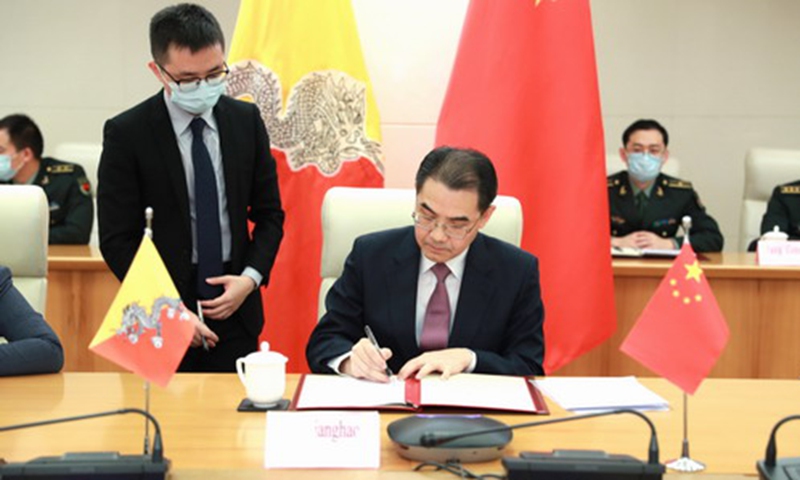
फोटो:चीन के विदेश मामलों के मंत्रालय
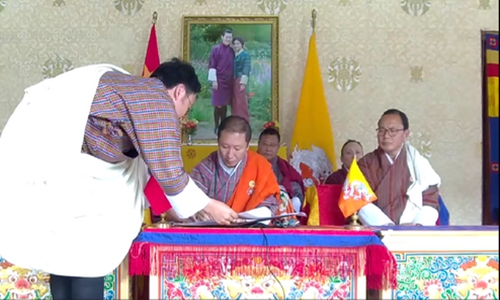
फोटो:चीन के विदेश मामलों के मंत्रालय
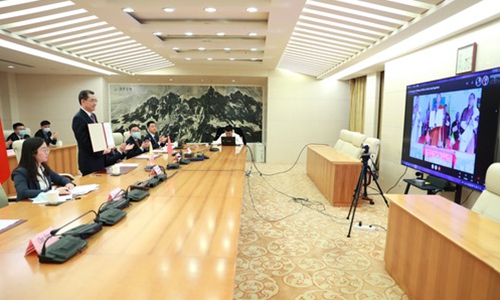
फोटो:चीन के विदेश मामलों के मंत्रालय
चीनी पीएलए सैनिकों ने भारत के साथ सीमा पार की? भारतीय मीडिया को इस विषय को हवा देने की आदत है: पर्यवेक्षक
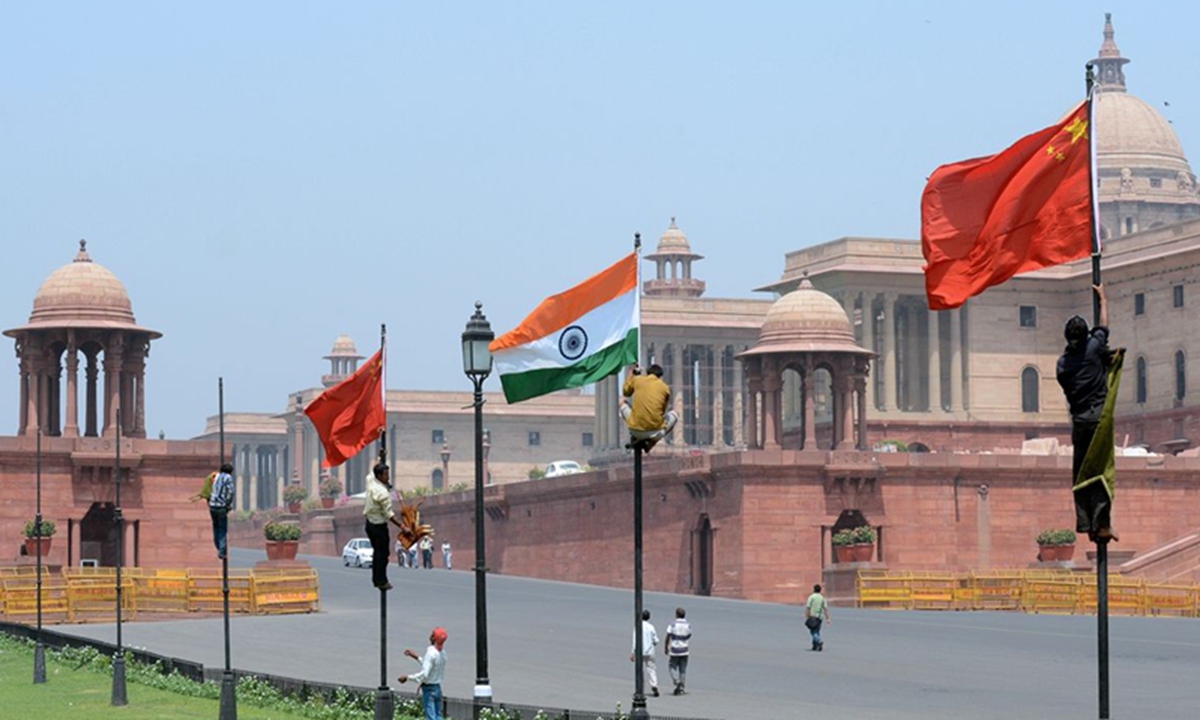
चीन-भारत
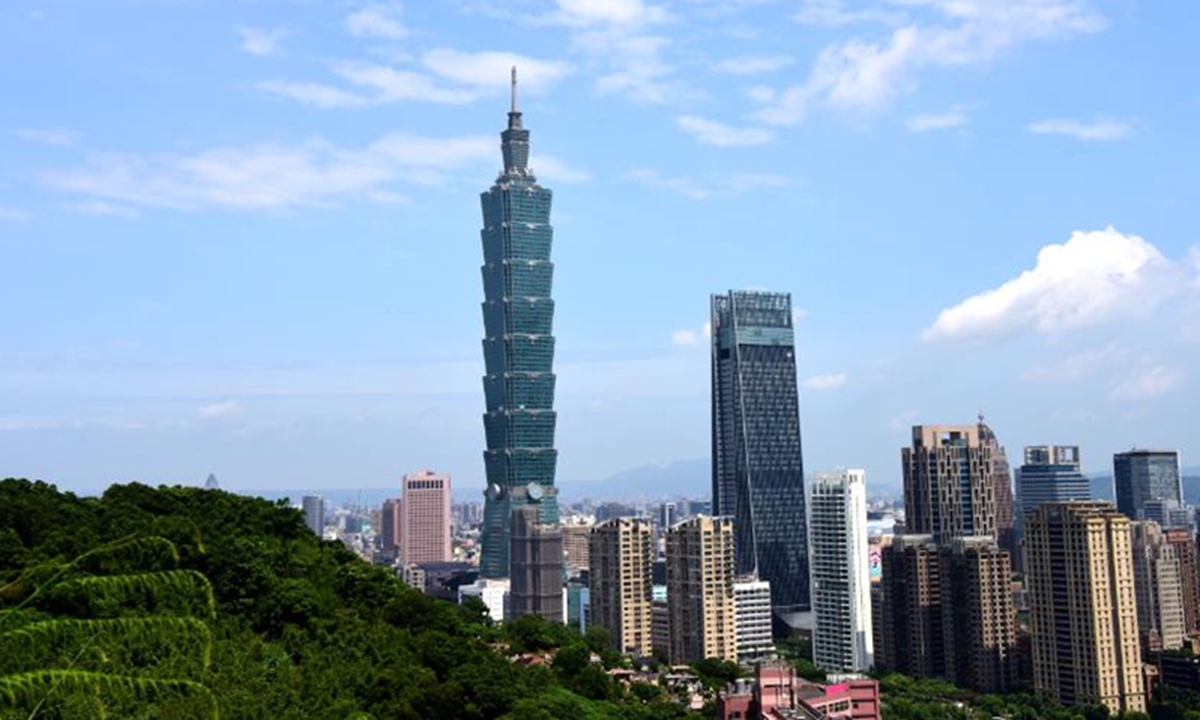
ताइपे 101 गगनचुंबी इमारत ताइपे, दक्षिण-पूर्व चीन के ताइवान में स्थित है। फोटो: सिन्हुआ
भारतीय भू-रणनीतिकार ब्रह्म चेलानी, जो लंबे समय से चीन विरोधी विद्वान रहे हैं, ने अहंकारी सलाह देकर फिर से बेतहाशा बात की है कि अधिकांश अमेरिकी विद्वान भी इसे कहने से पहले दो बार सोचेंगे - वाशिंगटन से इसे "क्रिस्टल स्पष्ट" करने का आह्वान करते हुए "ताइवान की रक्षा के लिए अपने स्वयं के सैन्य संसाधन जुटाएं।"चेलानी ने लेख में खोखले कॉल किए हैं, लेकिन वह उन गंभीर परिणामों का उल्लेख करना भूल गए जो वाशिंगटन को ताइवान के प्रश्न में सैन्य रूप से शामिल करने से भुगतने होंगे। चेलानी ताइवान के सवाल पर आग में घी डालने की कोशिश करता है, लेकिन उसके लिए गंदे पानी में हलचल की संभावना बहुत कम है।